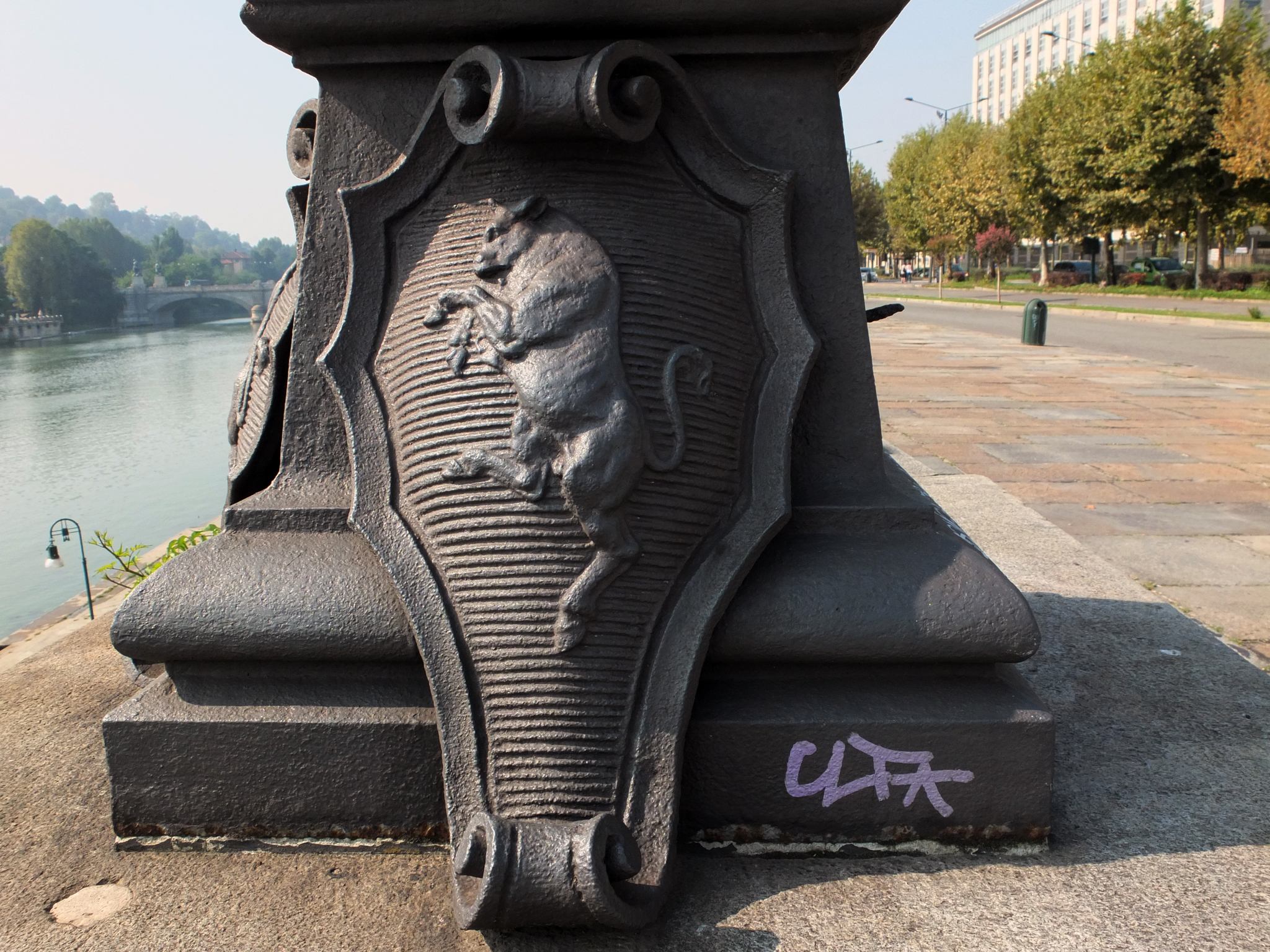 Torino (or Turin) is a beautiful architectural gem that sits along the Po River under the vista of the Alps. Most of the year you can see the snow covered peaks from the city.
Torino (or Turin) is a beautiful architectural gem that sits along the Po River under the vista of the Alps. Most of the year you can see the snow covered peaks from the city.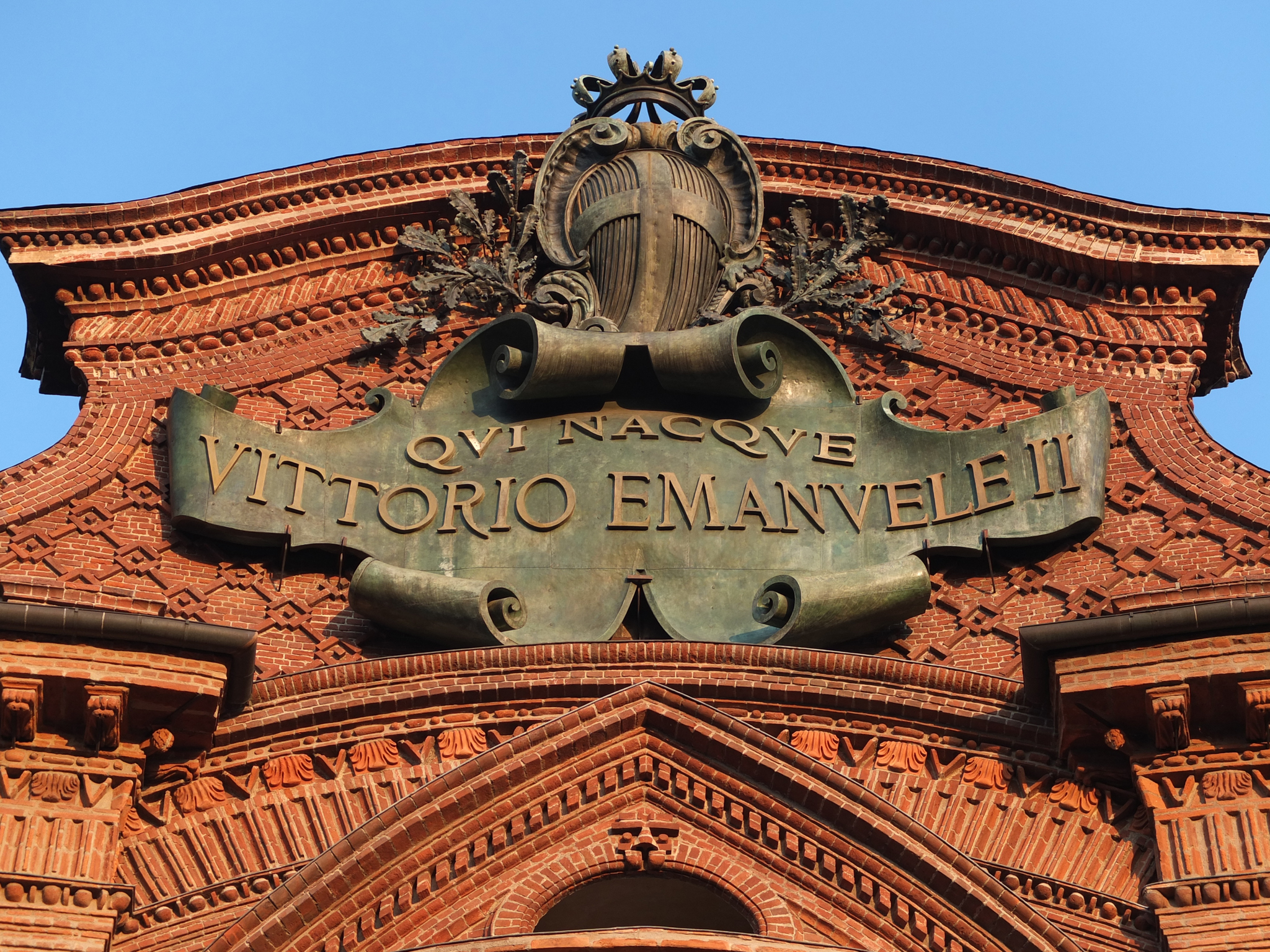
Torino also translates to ‘little bull’ and the Bull is everywhere from the City’s Coat of Arms to water fountains and street lamps. This is the home of FIAT, Lancia and Alfa Romeo, home of the Juventus Football Club, and Torino A.C. and home of the controversial Shroud of Turin.
Torino was also the seat of the House of Savoia, the Kingdom of Piemonte and Sardegna from 1003-1946.
In 1870, Savoia King Vittorio Emanuele II became the first King of Unified Italy since Napoleon. Turin is referred to as the “cradle of Italian liberty”, the “Capital of the Alps” and the “Detroit of Italy”.
The Constitution of the Italian Republic of 1947 brought an end to the Italian Monarchy and banished the House of Savoia from ever regaining power or property ever again. After that little mistake of handing the country over to Mussolini, the post war Republic of Italy shoveled the final spade of dirt over any chance that a King, Queen, Dictator, Emperor, Caesar or Holy Roman Emperor would ever rule over the country again. Instead, they got the likes of Silvio Berlusconi. However, the House of Savoia still manages to climb out of the grave every now and then, if only long enough for a good scandal.
The current Vittorio Emanuele, Prince of Naples still claims the title of King of Italy. So does his cousin Prince Amedeo, the Duke of Aosta. The two of them have been literally duking it out for years. Vittorio Emanuele’s life goes from one scandal to another, from murder to supplying prostitutes to wealthy clients of the Casino in Campione, Italy.
In 1978, he armed himself with a rifle and in an attempt to take back the rubber dingey stolen from his yacht, he shot and killed a 19 year old boy. He was acquitted. The verdict was unintentional homicide.
In 2004, at the wedding of the son of King Juan Carlos I of Spain, Vittorio Emanuele connected two punches into the face of Prince Amedeo.
Prince Emanuele Filiberto, son of Vittorio Emanuele and grandson of Umberto II the last King of Italy shows none of the characteristics of his father, Vittorio Emanuel. The two of them don’t interact much with each other. Emanuele Filiberto is an Italian celebrity but not because of his heritage. In 2009, he won the Italian version of dancing with the stars. In 2010, he placed second in the Sanremo music festival. He’s also written a couple of popular books, one about growing up in exile, the other a fictional love story about an Italian DJ. He lives in Paris, Rome and Los Angles and is married to the French actress Clotilde Courau. Despite the family, Emanuele Filiberto has made a success of himself.
There is still hope for the Savoia family. The historic city that we see was mostly built in the late 18th to early 20th century but if you look deeper you can see way back to the 1st century Roman city of Taurinorum, named after the Taurini, the tribe who lost the territory to the Romans
Porta Palatina (Palatine towers) is a 20 minute walk from our Hotel.
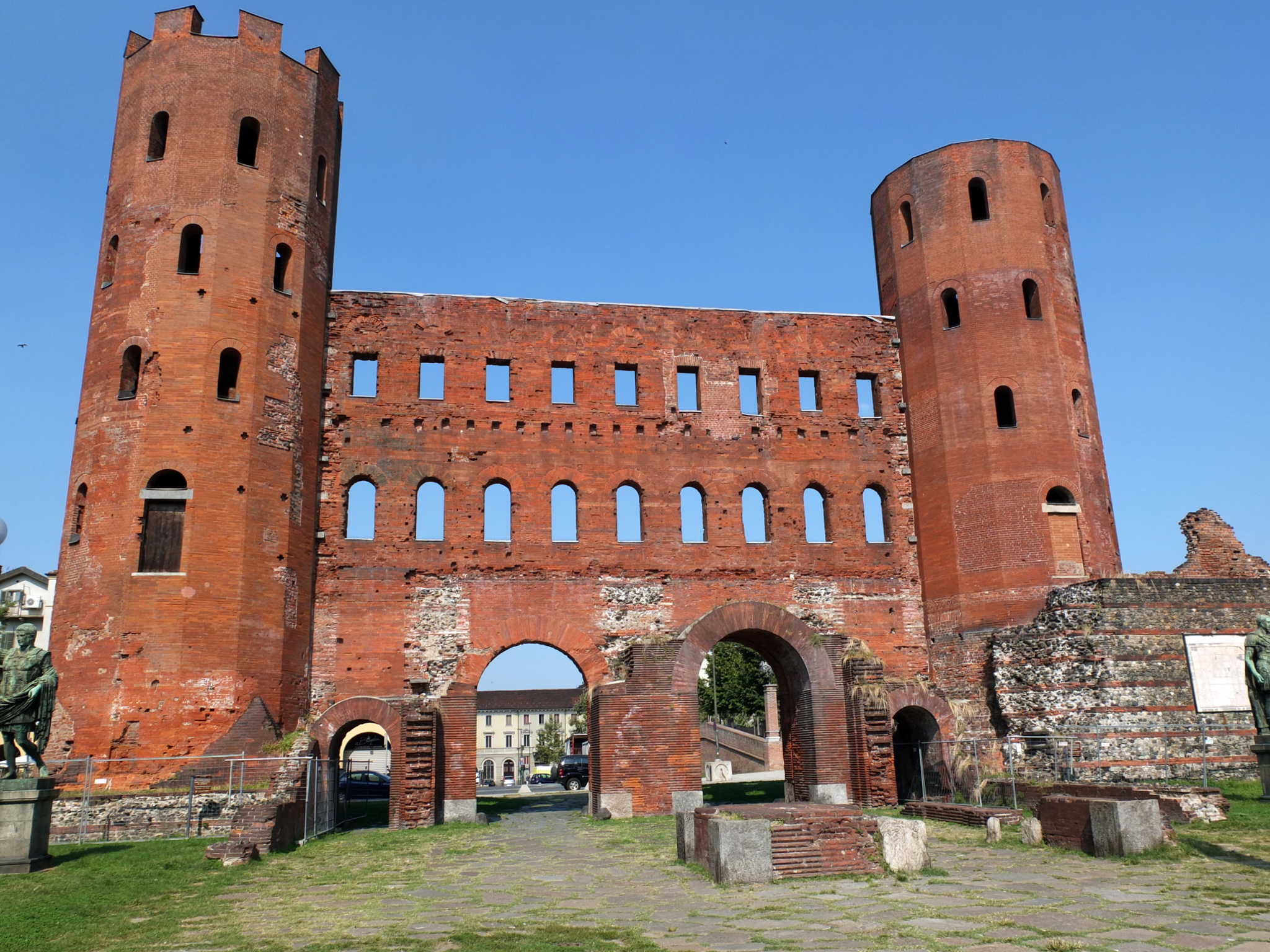 Actually, everything in the old town is no more than a 20 minute walk away from our hotel. This gate along with the old city walls once protected the Romans, Goths, Lombards, Charlemagne, Napoleon and the Kings of Savoia.
Actually, everything in the old town is no more than a 20 minute walk away from our hotel. This gate along with the old city walls once protected the Romans, Goths, Lombards, Charlemagne, Napoleon and the Kings of Savoia.
The Porta Palatina gate is pretty much all that’s left, however, it’s one of the best preserved Roman ruins in all of northern Italy. There are a few other remnants of the ancient city, the Porta Decumanus is buried under the Palazzo Madama and a 1st century theater buried under the Galleria Sabauda Art Museum next to the Palazzo Real.
Sabauda is the Piemontese pronunciation of the Savoia family. On weekdays, the Porta Palatina hosts a grand food market outside the gate. On Saturdays, it’s the enormous gathering of over 700 vendors selling everything from clothing to housewares to fashion fakes. There is a market like this in every town in Italy. This is one of the older ones. It’s been going on for 150 years. We were warned if we go to the market, leave our valuables in the hotel. The art of separating you from your money extends beyond the perimeter of the vendor booth.
I highly recommend buying the Torino Card. You can buy cards for 2days, 3days or 5days. We bought the 2day cards. If we were here longer we would have bought the 3 or 5 day. The card is a great bargain. You get free admission to over 190 sites (museums, exhibitions, fortresses, castles, Royal Residences, boat rides on the Po River, shuttle buses and the panoramic lift to Mt Superga. There are many locations to buy the card. We got ours in the Piazza Castello, across the square from the Palazzo Madama. In our two days with the card we visited the Palazzo Reale, the Galleria Sabauda, the Mole Antonellina Cinema museum, the Palazzo Madama, the Borgo Medievale, a boat ride on the Po and transport on the Star shuttle. Without the card it would have cost more than per person.
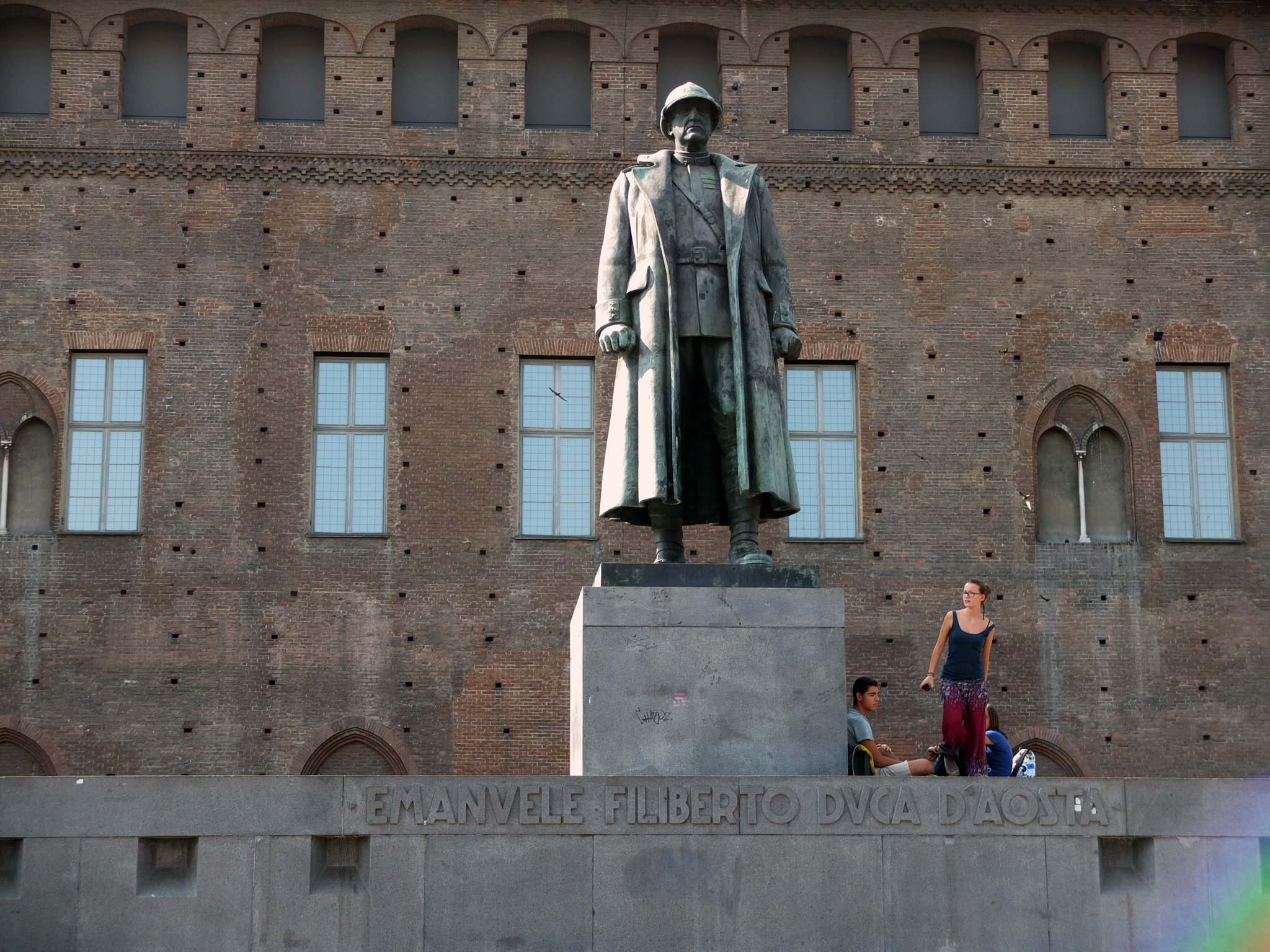 The Palazzo Madama, home of the Royal Savoia from the 14th -17th centuries is now the Civic Museum of ancient Art (not to be confused with the Torino Museum of Ancient Art). This old Palace is four floors of everything from a perfectly preserved 1st century set of 8 dining spoons to giant halls of ceramic plates. The name Madama comes from the Queens who paid for the improvements of the place over the years.
The Palazzo Madama, home of the Royal Savoia from the 14th -17th centuries is now the Civic Museum of ancient Art (not to be confused with the Torino Museum of Ancient Art). This old Palace is four floors of everything from a perfectly preserved 1st century set of 8 dining spoons to giant halls of ceramic plates. The name Madama comes from the Queens who paid for the improvements of the place over the years.
One side of the Palazzo looks like a 14th century fortress, while the other side, facing the Piazza Castello is baroque in style. It’s a very unusual building. In the 17th century the Savoia Royals moved over to the Palazzo Reale and in the 19th century over to the Palazzo Carignano (now the Risorgimento Museum), where Vittorio Emanuele II (First King of United Italy) was born. They were all built between the 14th and 17th centuries and they are all within a 10 minute walk from each other.
Walk along the grand arcades of via Roma and through the 17th century porticos of Piazza San Carlo, one of the most beautiful squares in Europe. In the center is the statue of the Duke Emanuele Filiberto, the 16th century Duke of Savoy known as Ironhead, ‘testa di ferro’ for his military campaigns against France. He was also the man who brought the famous Shroud of Turin to the city in 1578. In fact, he’s buried next to the famous cloth in the Chapel of the Holy Shroud.
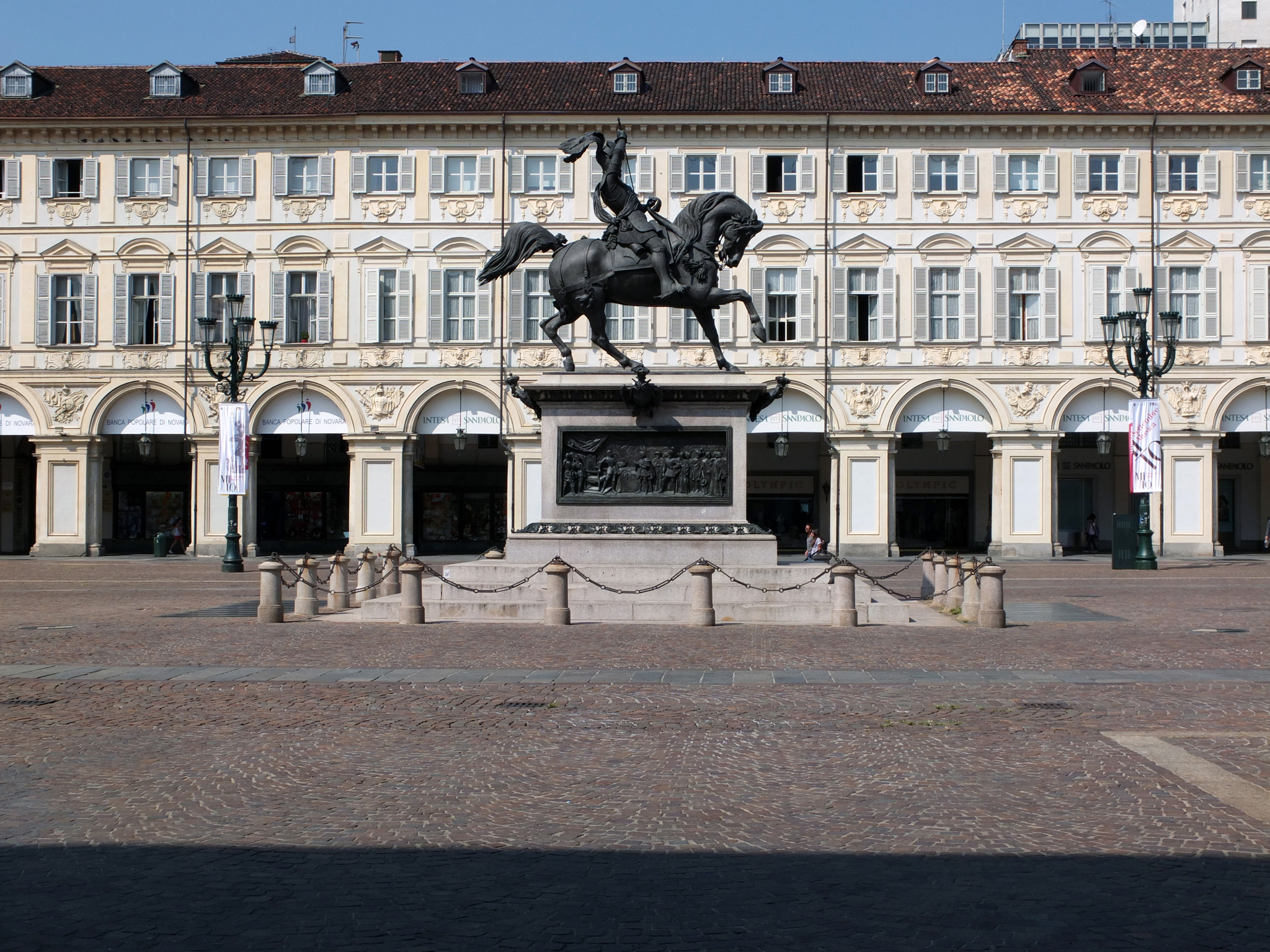 Piazza San Carlo, which also houses the two oldest coffee houses in the city; Café San Carlo from 1842 and the Café Torino from 1836.
Piazza San Carlo, which also houses the two oldest coffee houses in the city; Café San Carlo from 1842 and the Café Torino from 1836.
The Galleria Sabauda art gallery, part of the entrance ticket to the Palazzo Real, is built over a 1st century Roman Theater. The Gallery is being rebuilt into a new, larger home so the collection, although still impressive, was reduced to just a few rooms ranging from some amazing ancient bronze artifacts discovered in the Po River to great masterpieces by Italian and Dutch artists of the 15th and 16th centuries.
The new Gallery Sabauda should open in 2014.
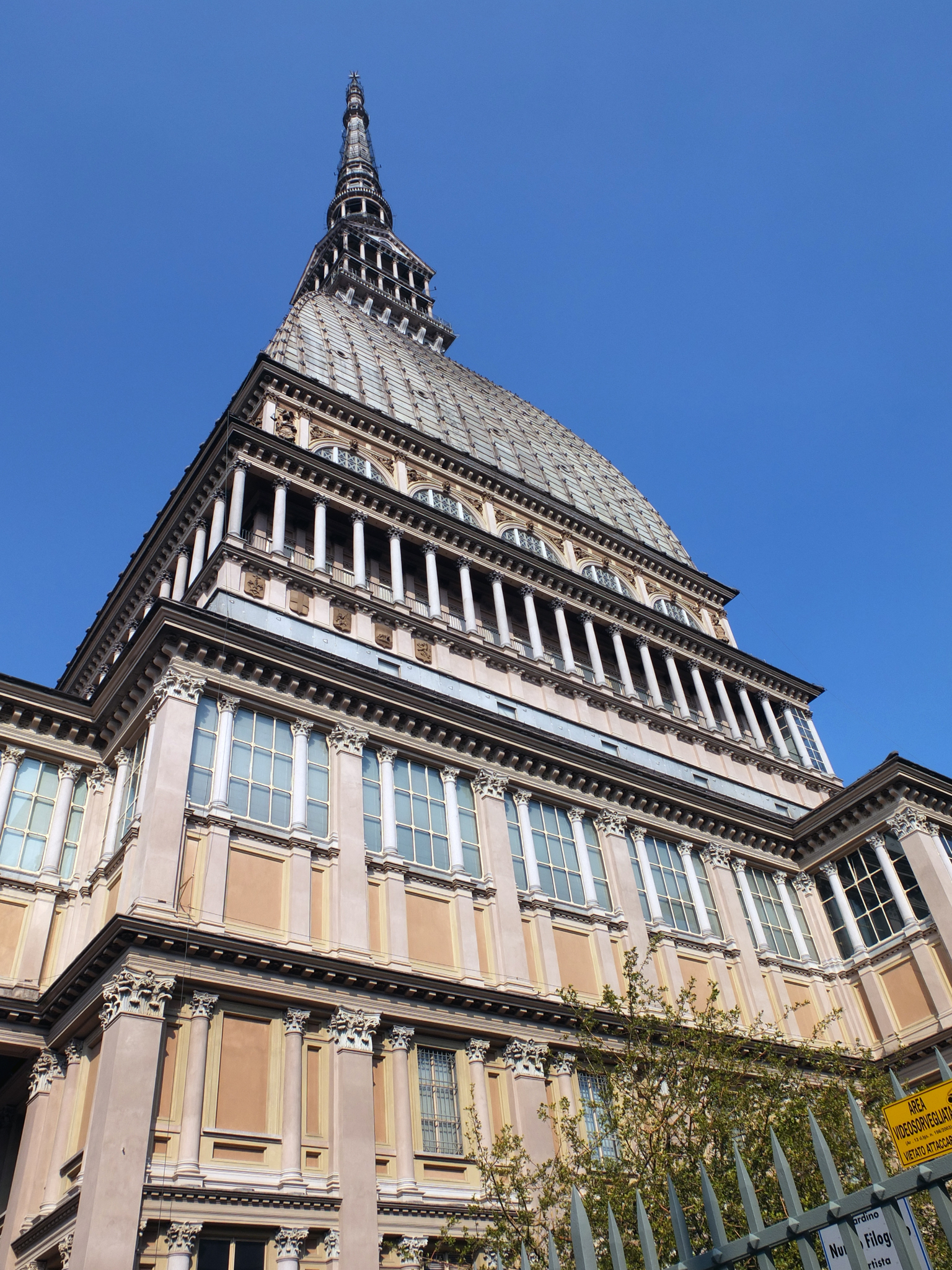 The architectural symbol of the city (aside from the Bull’s head) is the Molè Antonelliana, named after Alessandro Antonelli who began the construction of the building in 1862 as a Jewish synagogue.
The architectural symbol of the city (aside from the Bull’s head) is the Molè Antonelliana, named after Alessandro Antonelli who began the construction of the building in 1862 as a Jewish synagogue.
Molè means tower. Along the way, Antonelli and the Jewish community developed a lot of creative differences and Antonelli quit (or was possibly fired) while the building was half finished. Consequently, the Jewish Community abandoned the plans. They hated it and basically traded it to the city for enough money to build a traditional Moorish Style Synagogue.
Once the Jewish Elders were out of the way, Antonelli came back and finished the project his way, taking the height of the of the tower to 540’, making it (still) the tallest brick building in the world.
It’s taken a few hits a long the way. In 1904, a hurricane knocked off the statue on the spire. It was replaced with a star. In 1953, 132’ of the tower was knocked off in a storm. It was replaced with a metal structure covered in stone.
On the sides of the dome are the first of the Fibonacci numbers, 0 and 1 lit in neon. The Fibonacci sequence is created by adding the previous 2 numbers to make the next; ie: 0,1,1,2,3,5,8,13,21……. The sequence goes back to the 13th century and is utilized from things like mapping the curve of a sea shell to predicting foreign monetary markets.
The Molè now houses the National Museum of Cinema, which began as the private collection of Cinema enthusiast, Maria Adriana Prolo who started collecting Cinema history in 1938 and left the collection to the city (and the Mole) in 1991.
Turin was the home of Italian cinema going back to 1896. The first great film epic, “Cabiria” by Giovanni Pastrone was filmed here in 1914. The film was written by the poet, pilot, playboy and political outcast Gabriele D’Annunzio. The film, set in ancient Sicily during the 2nd Punic war includes the eruption of Mt. Etna, hundreds of children sacrificed to the god Moloch, battles with the Numidian Kings, Hannibal crossing the Alps, the defeat of the Roman Navy at Syracuse and a cast of thousands.
Although many believe D.W. Griffith’s 1915 “Birth of a Nation” to be the first epic film, Cabiria beat it by a year. A restored version was screen in 2006 at the Cannes film festival with an introduction by Martin Scorsese.
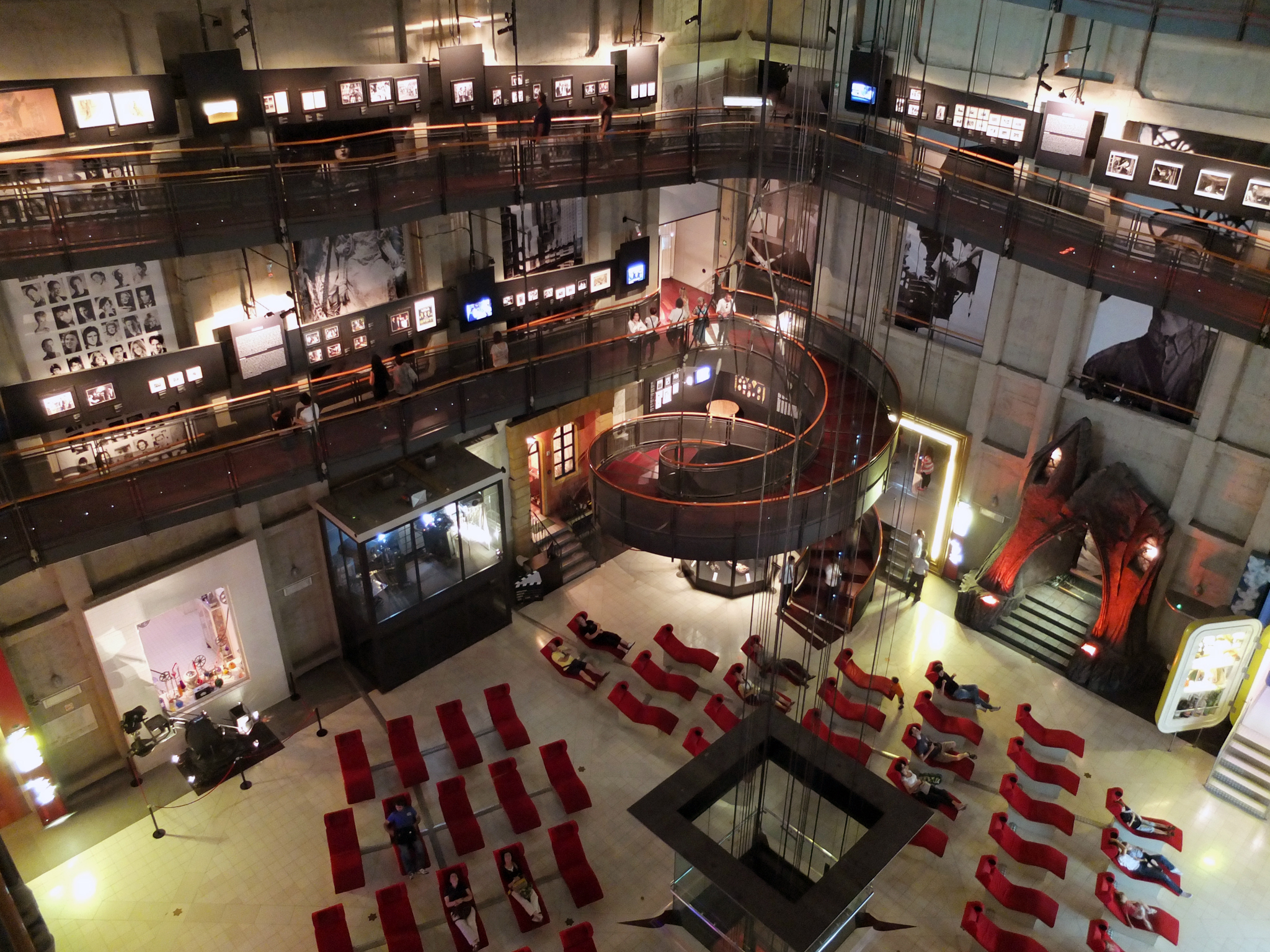 During our visit to the Mole, there was also retrospective of Scorsese’s work that was amazing. The lower floors of the museum take you through a wonderful tour of film making from old projectors, flip books, Edison kinescopes and film clips from 1870 showing a boy laughing or an athlete jumping or a woman covering her face with a fan.
During our visit to the Mole, there was also retrospective of Scorsese’s work that was amazing. The lower floors of the museum take you through a wonderful tour of film making from old projectors, flip books, Edison kinescopes and film clips from 1870 showing a boy laughing or an athlete jumping or a woman covering her face with a fan.
As you walk up the spiral ramp, you’ll see all kinds of film memorabilia from the film development process to old movie posters. It was one of the best museums we’ve ever visited, hours of fun and entertainment at every turn.
Another great attraction of the Molè is the elevator up to the top for one of the best views over the city. Maurizio Puato, photographer and acrobat climbed the Molè (no ropes, just hands and feet) and photographed the entire climb. You can see his work on his website.
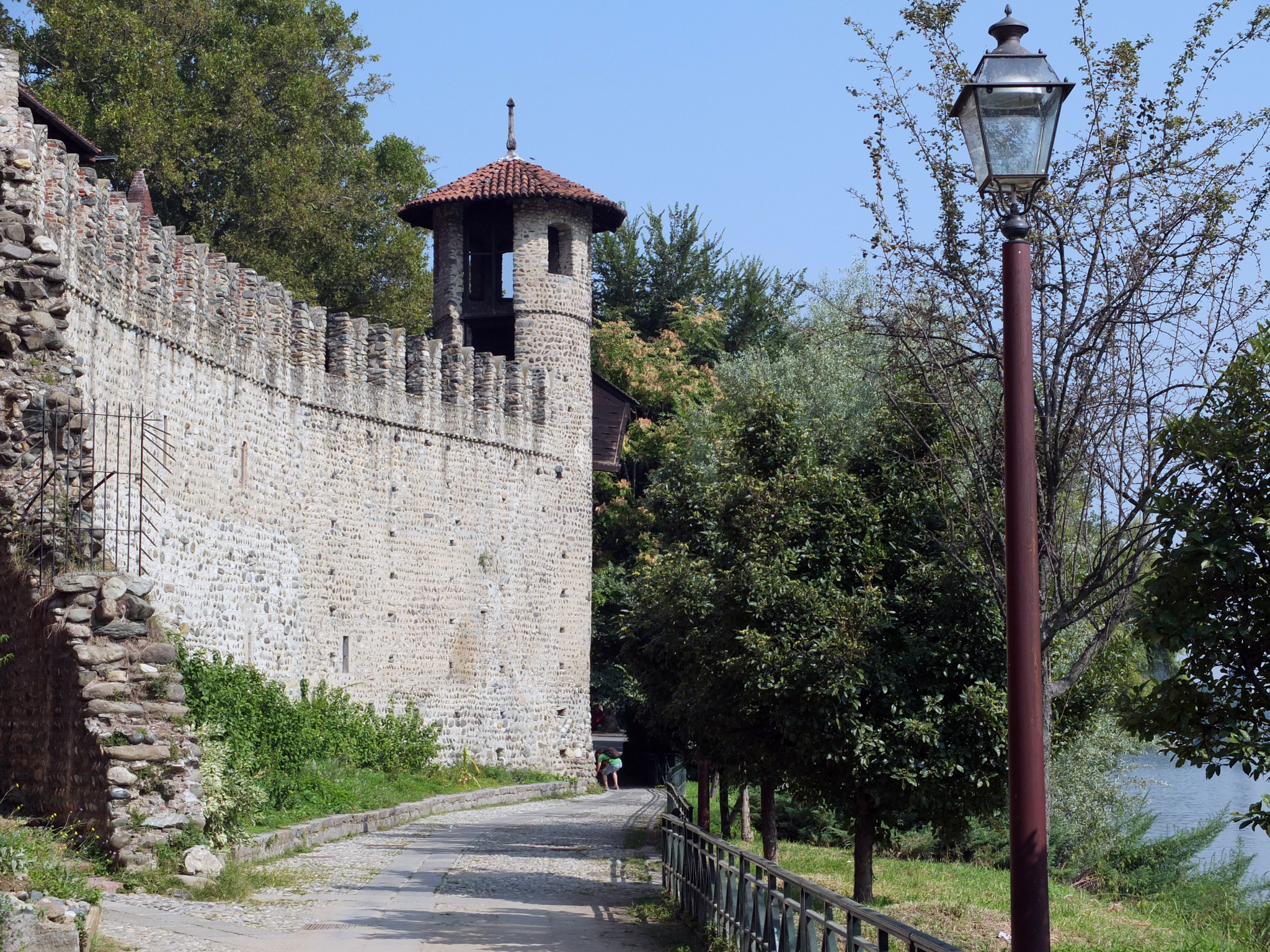 A walk down to the Po River leads to the Parco Valentino. This was the site of the 1884 Expo. The only thing left of the fair is the Borgo Medievale, the Medieval castle that looks like a movie set.
A walk down to the Po River leads to the Parco Valentino. This was the site of the 1884 Expo. The only thing left of the fair is the Borgo Medievale, the Medieval castle that looks like a movie set.
Inside the castle is a complete (guided) tour of life in the 10th century Piemonte. The tour is in Italian but even if you don’t know the language you can pretty much guess the content. If you walk to the Park take the boat back and catch a view of the city from the river.
The Po is filled with rowing clubs. With names like the Mek-Mek club and the Flic-Flac club they appear along the river every few hundred feet. They’ve been competing against each other for hundreds of years.
The central historical part of the city is Baroque but once you get a few blocks away, most of the newer buildings are referred to as Rational Architecture and indeed they do make rational sense.
The buildings are very harmonious, late 19th to early 20th century with a nod towards the northern Italian Art Deco movement known as Liberty Style, named after the Liberty Department store in London that provided art deco furnishings to wealthy Italians.
A 15 minute drive out of town is the Basilica of Superga, a Baroque Basilica on top of the Superga mountain.
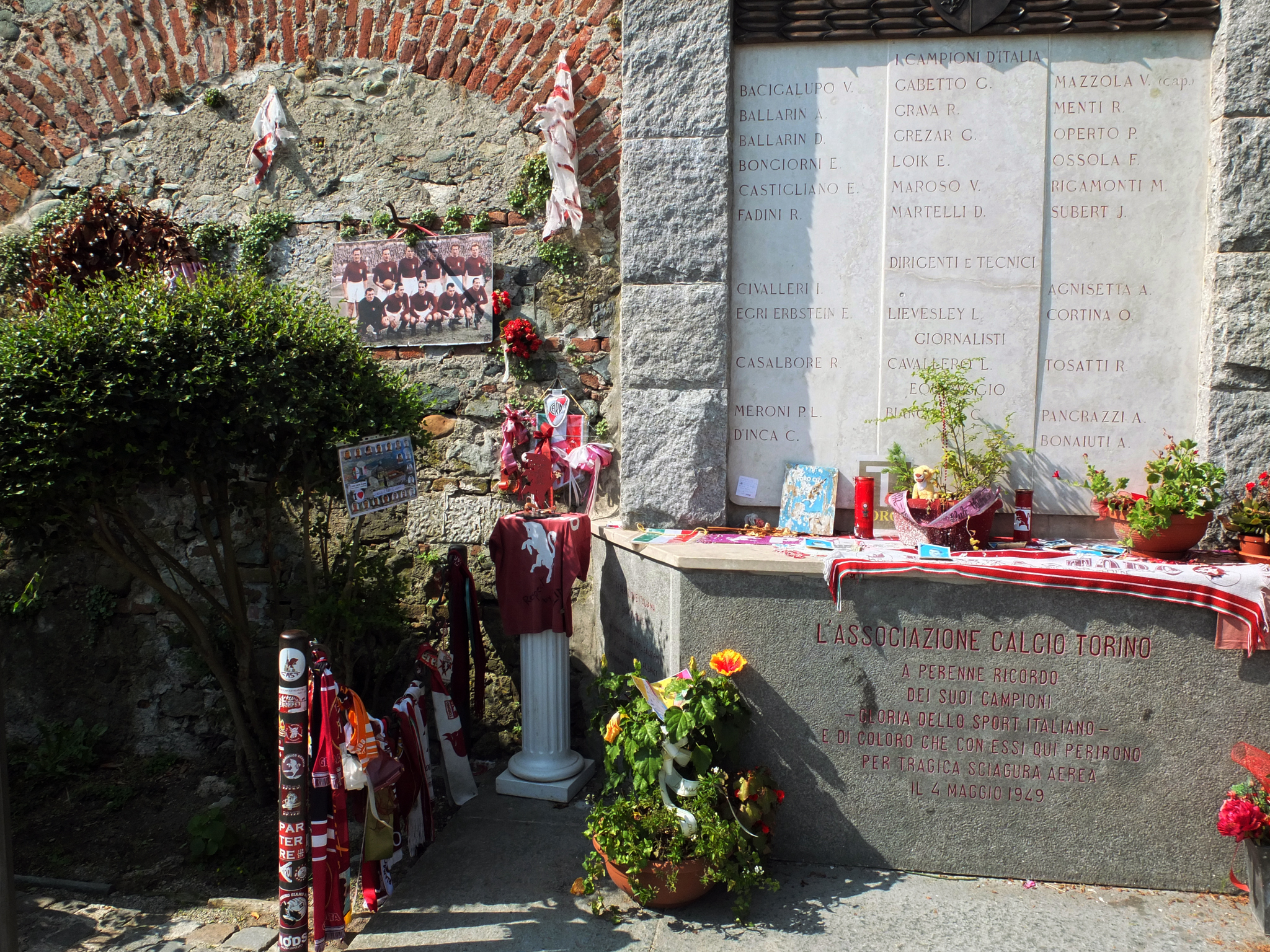 In 1949, the entire Torino A.C. football club (Il grande Torino) was killed here when their plane crashed just below the Basilica. Every year the fans of the Torino A.C. club makes a commemorative walk up the hill to the church.The back side of the great Cathedral is a ruin that was never reconstructed. It could be in memory of the plane crash or from an earlier catastrophe.
In 1949, the entire Torino A.C. football club (Il grande Torino) was killed here when their plane crashed just below the Basilica. Every year the fans of the Torino A.C. club makes a commemorative walk up the hill to the church.The back side of the great Cathedral is a ruin that was never reconstructed. It could be in memory of the plane crash or from an earlier catastrophe.
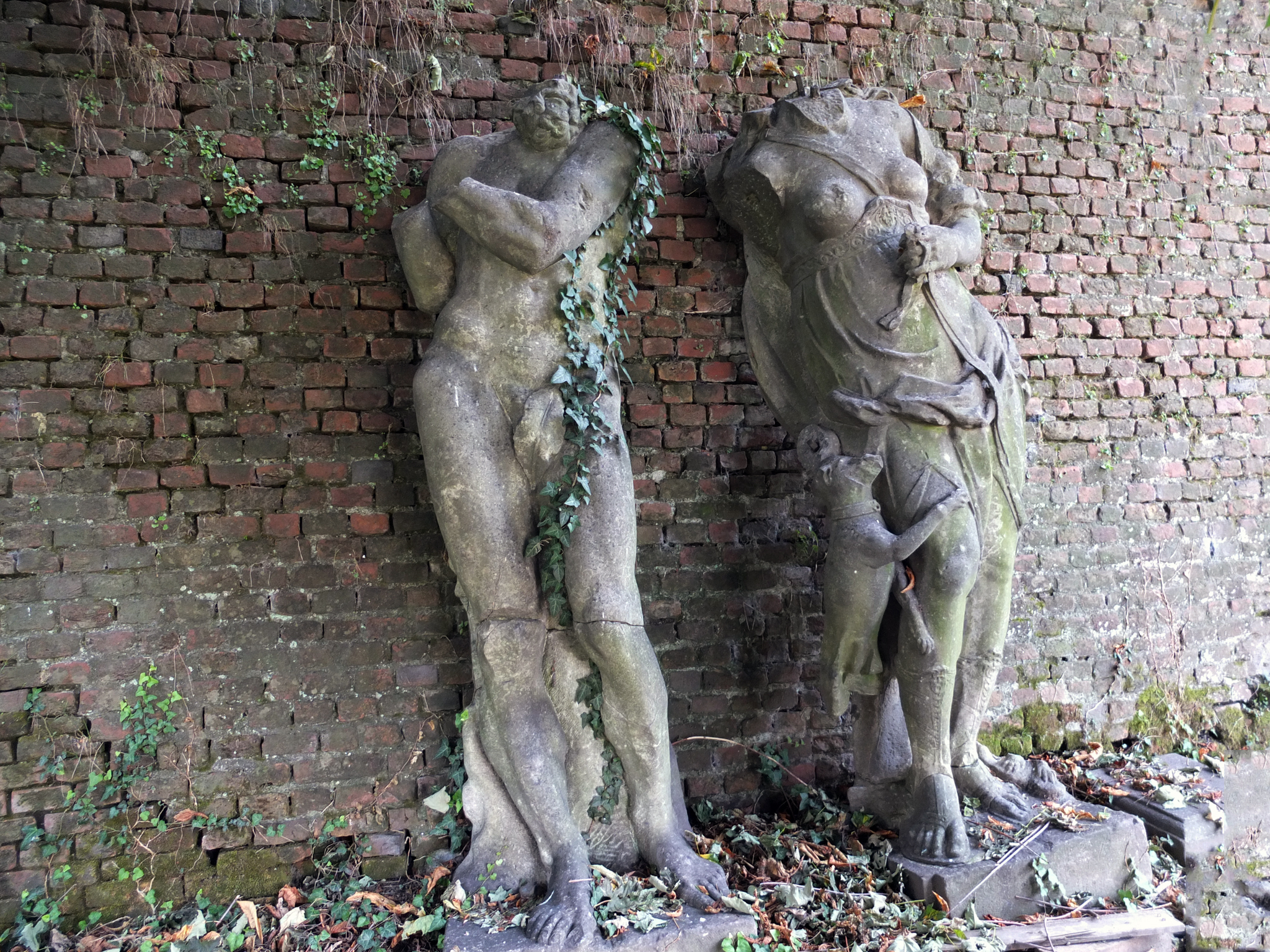 We just scraped the surface of the city. We never got to the Risorgimento Museum or the Egyptian Museum, started in 1824 and considered one of the best of its kind in the world.
We just scraped the surface of the city. We never got to the Risorgimento Museum or the Egyptian Museum, started in 1824 and considered one of the best of its kind in the world.
We didn’t get to the 1932 National Car Museum or the new auto museum that opened in 2005.
We didn’t see the new Renzo Piano designed Pinotecca Giovanni e Marella Agnelli art museum that opened in 2002 and we never got to the Biblioteca Reale to see the Leonardo Da Vinci self portrait.
There are a lot to reasons to come back to Torino. We loved our stay at the Hotel Principe di Piemonte. It was built in 1930 in what is known as the style of rational architecture. The exterior is simple and the interior is a wonderful nod to the 1930’s art deco movement. In fact much of the city was restored for the Olympic Games. It’s extremely comfortable.
A good restaurant recommendation is the Ristorante Consorzium, a slow food restaurant serving a great adaptation of local favorites like Agnolotti (stuffed dumplings) and Brasato (stewed veal) as well as some modern creations. It’s very reasonably priced and you need a reservation.
A couple of good recommendations for Barbera d’Asti wines include the dark and complex 2010 Marchesi Alfieri Barbera D’Asti superior and the deep and spicy 2010 Pico Maccario Tre Roveri Barberi d’Asti Superiore. Barbera d’Asti wines are complex, delicious, ready to drink and a very good price. Yes, this is Barolo and Barberesco country but these wines are better for the cellar. They tend to be expensive and take a long time to open. While traveling in Piemonte, I recommend the Barbera d’Asti.
For more photos of our time in Torino click here
You must be logged in to post a comment.